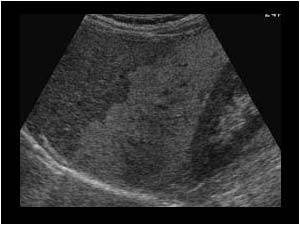Understanding Fatty Infiltration in Detail

Introduction to Liver
The liver is a large organ that functions round the clock to keep good health. It serves as a system that converts excessive glycogen into glucose, which is necessary for the production of energy. It also operates as a filtration system that actively removes waste from the body with the help of bile. Liver also increases the production of proteins, which act in the prevention of blood clots. It acts in synthesizing certain substances that have a crucial role in metabolism. The proper functioning of the organ will maintain the metabolism and immune system in its original state.
Function of Liver
Liver has a significant function to perform in controlling the body fat. The cells in the organ store fat, especially, triglycerides in the cytoplasm. At normal conditions, the liver accounts for 5% of the total fat. Situations become problematic when the levels increase than their nominal value. The condition is fatty infiltration. Fatty liver, fatty metamorphosis and steatosis are the other names for the ailment. Under such situations, the liver cells hold excessive fat content. Neglecting the situation will improve the collection of fat, which results in severe damage to the organ and its functionality. It will lead to the development of cirrhosis and liver cancer.
Fatty infiltration
Fatty infiltration can be focal or diffusive in nature. In the case of diffusive fatty infiltration, triglyceride accumulation is excess. Over a short period, they spread to every cell of the liver. In the case of focal fatty liver, only a portion of the gland affects. Moreover, the development of the triglycerides is non-uniform in such a state. Focal fatty infiltration is the state that develops due to changes venous flow, malabsorption of lipoproteins and grows near the fissure of ligamentum teres. The condition becomes dangerous if a patient neglects the initial symptoms and treatment process.
Cause Behind Fatty Infiltration Changes
The cause behind fatty infiltration changes from one person to another. The most common reason behind the occurrence is the increase in the transaction of fat from the hepatic gland to other organs and parts in the body. It might be due to the reduced rate at which the liver breaks down the fat and removes the excessive content. Any alteration to the standard procedure that the liver follows causes liver disorder. It is important to ensure good health to protect the functioning of every organ. Disorder of organ causes trouble with the operation of the human body.
Fatty Liver Disease
Steatosis or the fatty liver disease is a serious concern. It causes due to excessive collection of fat in the liver cells. If the situation causes inflammation in the organ, it adheres to the presence of cirrhosis. It is further divided into two conditions – alcoholic steatohepatitis and nonalcoholic steatohepatitis. Alcohol abuse is the primary contributor to the alcoholic FLD while obesity, excessive weight and diabetes are the primary contributors to the non-alcoholic FLD. Detecting the presence relies on the results of a blood test. The presence of liver enzymes will reveal the fact that the liver is functioning improperly.
Factors for Development of Fatty Infiltration
Factors that lead to the development of fatty infiltration are long term parenteral nutrition, excessive use of medicines, steroids, and endogenous products of steroids, pregnancy, exposure to chemicals such as yellow phosphorus and carbon tetrachloride, medical conditions such as HIV, Hepatitis C, improper bowel movement and hyperlipidemia. Symptoms include pain in the upper abdomen, fatigue and malaise, sudden weight loss or gain, and without proper treatment, scar tissues take over the entire organ resulting in liver failure. Under such a case, liver transplant is the only option available for a person. Therefore, following a healthy lifestyle is crucial to avoid unwanted diseases.
Diagnosing Fatty Infiltration
Diagnosing fatty infiltration of the liver relies on the changes observed by a person. Regular blood test will also aid in recognizing the presence of fatty liver. The treatment of the illness depends on weight loss and diet chart. There is no proper medication for the cure and the only way to overcome is altering the lifestyle. People have to be careful about the food they intake and the physical activities they involve. Fatty infiltration is reversible. If left untreated, it turns sore and effects the functioning of the liver. Furthermore, severe damage includes liver failure or occurrence of cancer, which will lead to death.
